Abstract: The irregular menses common with Polycystic Ovarian Syndrome (PCOS) [1] can lead to prolonged periods of niddah, during which the couple must refrain from physical contact. PCOS is the most common cause of female factor infertility in this patient population. Treatment of the condition in the observant Jewish cohort should consider the timing of induced menses to allow for the desired orderly shedding of the uterine lining while minimizing episodes of niddah.
Discussion: Polycystic ovarian syndrome (PCOS) is a medical condition that can have significant impact on the halacha observant woman. The irregular bleeding and spotting common with this condition can lead to prolonged periods of niddah, during which the couple is not allowed any physical contact. The inability to predict menses is also a stress on the halacha observant couple. Therefore, treatment of this condition may be particularly important to such couples.
When deciding on treatment, it is important to remember that spreading out episodes of induced shedding of the uterine lining will mean less time spent as niddah. When prescribing hormonal contraceptives for control of PCOS symptoms, consider giving two packages back to back. A similar approach can be used if prescribing serial progesterone challenge and withdrawal. Note that, while Jewish law prescribes certain behavior during niddah, there is no halachic requirement for a woman to become niddah.
Even minor spotting or bleeding will render a woman niddah if it is found on an internal examination (bedikah), or if a stain larger than a dime is found on her inner thighs or white undergarments. Therefore, any bleeding from this condition or its treatment is of particular concern in this patient population.
Many women are likely to be most concerned with the reproductive consequences of PCOS. Fertility is highly valued in this cultural group, even from the beginning of marriage, and is already of concern for women contemplating marriage prospects.[2] When treating the infertility that is common with this condition, halachic considerations for fertility treatments must be taken into consideration. For further details see the articles on infertility treatmenton this site.
It is important to educate patients that this is a systemic condition that also places them at higher risk for diabetes, high cholesterol, high blood pressure, and heart disease. Therefore, it is important that such women understand that all aspects of this syndrome – not only the reproductive implications – need to be monitored and treated. [3] [4]
Implications for Practice: This condition is common in this patient population.
Treatment regimens should try to spread out episodes of induced shedding if possible.
Infertility treatment raises halachic issues that physicians should be familiar with prior to advising such couples.
Medical References
[1] Sirmans SM, Pate KA. Epidemiology, diagnosis, and management of polycystic ovary syndrome. Clin Epidemiol. 2014; 6: 1–13.
[2] Balen AH, Morley LC, Misso M, et al. The management of anovulatory infertility in women with polycystic ovary syndrome: an analysis of the evidence to support the development of global WHO guidance. Hum Reprod Update. 2016 Nov;22(6):687-708.
[3]Goodman NF, Cobin RH, Futterweit W et al. CLINICAL REVIEW: Clinical review:to the best practices in the evaluation and treatment of polycystic ovary syndrome – part 1.Endocr Pract. 2015 21:1291-300.
[4] Goodman NF, Cobin RH, Futterweit W et al. CLINICAL REVIEW: Clinical review:to the best practices in the evaluation and treatment of polycystic ovary syndrome – part 2. Endocr Pract. 2015 21:1415-26.

